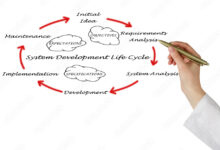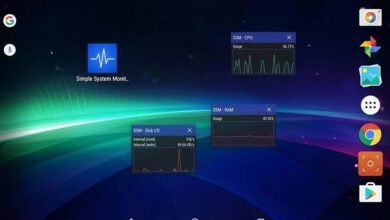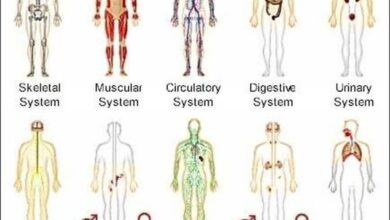System Haptics: 7 Powerful Ways It’s Revolutionizing Tech
Imagine feeling the tap of a notification, the rumble of a virtual explosion, or the texture of fabric—all through your phone. Welcome to the world of system haptics, where touch meets technology in mind-blowing ways.
What Are System Haptics? A Deep Dive into Touch-Based Feedback
:max_bytes(150000):strip_icc()/haptics-7bb8f9cf7b4b449ea85eda89b9e5e7d6.jpg?w=1200)
System haptics refers to the technology that delivers tactile feedback to users through vibrations, motions, or resistance in electronic devices. Unlike simple buzzes from older phones, modern system haptics are engineered to simulate real-world sensations with precision and nuance. This technology is embedded in smartphones, wearables, gaming consoles, and even medical devices, transforming how we interact with digital interfaces.
The Science Behind Haptic Feedback
Haptics comes from the Greek word “haptikos,” meaning “able to touch or grasp.” In engineering terms, system haptics involve actuators—tiny motors that generate controlled vibrations. These actuators respond to software commands, creating feedback patterns that mimic textures, clicks, or impacts. The brain interprets these signals as physical sensations, enhancing user experience.
- Electrostatic actuators create surface friction changes.
- Linear resonant actuators (LRAs) produce smooth, directional vibrations.
- Eccentric rotating mass (ERM) motors generate broad, less precise buzzes.
“Haptics bridge the gap between digital and physical interaction,” says Dr. Katherine Kuchenbecker, a leading researcher in haptic technology at the Max Planck Institute.
Evolution from Simple Buzz to Advanced System Haptics
Early mobile phones used basic vibration motors for alerts—think of the Nokia 3310’s iconic buzz. These were effective but crude. Fast forward to today, and system haptics have evolved into sophisticated feedback systems. Apple’s Taptic Engine, for example, uses precise timing and variable intensity to simulate button presses on an iPhone’s screen, even though no physical button moves.
Modern system haptics are not just about vibration—they’re about context. A message alert feels different from a calendar reminder. Scrolling through a list produces a subtle tick with each item, mimicking mechanical detents. This level of detail makes interfaces feel more intuitive and responsive.
How System Haptics Enhance User Experience
The real power of system haptics lies in their ability to improve usability, accessibility, and emotional engagement. By adding a tactile dimension to digital interactions, they make technology feel more natural and immersive.
Improving Accessibility for Visually Impaired Users
For users with visual impairments, system haptics serve as a critical communication channel. Smartphones and wearables use distinct vibration patterns to convey information without relying on sight. For example, Apple Watch uses haptic alerts to guide users during navigation, pulsing on the left or right side of the wrist to indicate turn directions.
Google’s Android also supports customizable haptic feedback for accessibility settings. Apps like Be My Eyes leverage system haptics to provide non-visual cues during video calls with sighted volunteers, enhancing independence for blind users.
Boosting Immersion in Gaming and VR
In gaming, system haptics are game-changers—literally. The PlayStation 5’s DualSense controller features adaptive triggers and advanced haptics that simulate tension, recoil, and terrain textures. Pulling a bowstring feels stiff; walking on sand produces a muffled rumble. This level of realism deepens player immersion.
Virtual reality (VR) takes this further. Devices like the Meta Quest Touch Pro gloves integrate system haptics to simulate object weight and surface texture. When you “grab” a virtual ball, the gloves apply pressure and vibration to mimic its shape and density. According to a study published in Scientific Reports, users reported a 40% increase in presence and realism when haptics were enabled in VR environments.
System Haptics in Smartphones: Beyond the Buzz
Smartphones are the most widespread platform for system haptics, and manufacturers are pushing the boundaries of what’s possible. From subtle keystroke feedback to dynamic alert patterns, these devices use haptics to create a seamless, intuitive interface.
Apple’s Taptic Engine: Precision in Every Tap
Apple pioneered advanced system haptics with the introduction of the Taptic Engine in the iPhone 6S. Unlike traditional vibration motors, the Taptic Engine uses a linear actuator that can produce short, sharp taps or long, smooth rumbles with millisecond precision.
It powers features like Haptic Touch (a precursor to 3D Touch), which allows users to access quick actions by pressing firmly on the screen. Even the mute switch on newer iPhones provides a satisfying click through haptic feedback, despite being solid-state.
Android’s Haptic Customization and Innovation
Android devices, particularly those from Samsung, Google, and OnePlus, have caught up with highly customizable system haptics. The Samsung Galaxy S24 Ultra, for instance, uses dual LRAs to deliver directional feedback. You can feel notifications coming from the top or bottom of the phone, depending on the app.
Google’s Pixel phones use machine learning to tailor haptic responses based on user behavior. If you type quickly, the keyboard adjusts feedback timing to match your rhythm. This adaptive approach makes interactions feel more personal and responsive.
The Role of System Haptics in Wearables
Wearables like smartwatches and fitness trackers rely heavily on system haptics due to their small screens and frequent use in hands-free scenarios. Haptic alerts are discreet, effective, and often more noticeable than sounds in noisy environments.
Apple Watch: Silent Alerts with Emotional Impact
The Apple Watch uses system haptics to deliver everything from heartbeat notifications to mindfulness reminders. One of its most beloved features is the “Digital Crown” click—a simulated mechanical feedback when scrolling, even though the crown doesn’t physically move.
The watch also enables “taps” from loved ones—a gentle pulse sent remotely as a sign of connection. This feature, known as “Send a Tap,” has been praised for its emotional resonance, especially among couples and families.
Fitness Trackers and Health Monitoring
Devices like the Fitbit Charge 6 and Garmin Venu 3 use system haptics to guide workouts, alert users to heart rate spikes, or remind them to stand. During guided breathing exercises, the haptic pulse synchronizes with inhalation and exhalation, helping users stay in rhythm.
In medical applications, haptics are being tested for pain management and neurological rehabilitation. A 2021 NIH study found that rhythmic haptic stimulation could reduce chronic pain perception by up to 30% in some patients.
System Haptics in Automotive and Navigation
As cars become more digital, system haptics are playing a crucial role in driver safety and interface design. Touchscreens dominate modern dashboards, but relying solely on vision while driving is dangerous. Haptics provide tactile confirmation of inputs without requiring visual attention.
Haptic Feedback in Touchscreen Controls
Car manufacturers like Tesla, BMW, and Mercedes-Benz are integrating system haptics into their infotainment systems. When you adjust the climate control on a BMW iDrive touchscreen, you feel a subtle click, confirming your input. This reduces driver distraction and improves confidence in touch-based controls.
Some systems even use localized haptics—vibrating only the area of the screen you’re touching—making it easier to identify buttons by feel alone.
Navigation and Safety Alerts
Advanced driver-assistance systems (ADAS) use haptics to warn drivers of lane departures, blind-spot intrusions, or impending collisions. A vibrating steering wheel or seat can alert the driver more effectively than a chime, especially in loud environments.
For example, the Ford Mustang Mach-E uses seat-mounted haptics to signal lane changes. A pulse on the left side of the seat warns of a vehicle in the left blind spot. This spatial feedback is faster and more intuitive than audio cues.
Medical and Industrial Applications of System Haptics
Beyond consumer electronics, system haptics are making waves in high-stakes fields like surgery, remote operations, and industrial training. Here, precision and realism are not just desirable—they’re essential.
Surgical Robotics and Training Simulators
In robotic surgery, system haptics allow surgeons to “feel” tissues through robotic arms. The da Vinci Surgical System, while not yet fully haptic-enabled, is evolving toward force feedback that lets surgeons sense resistance when cutting or suturing.
Training simulators for laparoscopic surgery use haptic gloves and tools to replicate the feel of organs, blood vessels, and sutures. According to a study in the Journal of Surgical Education, trainees using haptic-enabled simulators showed a 25% improvement in procedural accuracy compared to those using visual-only systems.
Remote Operations and Telepresence
In hazardous environments—like nuclear facilities or deep-sea exploration—operators control robots remotely. System haptics allow them to feel what the robot feels, improving control and reducing errors. NASA uses haptic interfaces for robotic arm operations on the International Space Station.
Companies like HaptX are developing full-body haptic suits for industrial training and teleoperation. These suits use microfluidic technology to deliver precise pressure, temperature, and texture feedback, enabling operators to “touch” virtual or remote objects with astonishing realism.
The Future of System Haptics: What’s Next?
The evolution of system haptics is far from over. Researchers and engineers are exploring new materials, AI integration, and even haptic communication to push the boundaries of what’s possible.
AI-Powered Adaptive Haptics
Future system haptics will be smarter, learning user preferences and adapting in real time. Imagine a smartphone that adjusts its vibration strength based on your grip, or a VR controller that intensifies feedback when your heart rate rises during a scary game.
Machine learning models can analyze user behavior to optimize haptic patterns for clarity and comfort. Google’s AI research team has already demonstrated a prototype that personalizes haptic alerts based on user stress levels detected through biometrics.
Haptic Communication and Emotional Connection
One of the most exciting frontiers is haptic communication—using touch to convey emotions. Startups like Omate and Bond Touch are developing wearables that let users send “hugs” or “heartbeats” to loved ones through synchronized vibrations.
In the future, system haptics could become a new language of emotion, especially in long-distance relationships or mental health support. A 2023 MIT Media Lab project showed that rhythmic haptic pulses could reduce anxiety in participants by 35%, suggesting therapeutic potential.
Ultrasound and Mid-Air Haptics
Researchers are experimenting with ultrasound-based haptics that create tactile sensations in mid-air—no device needed. Ultrahaptics (now part of Bosch) has developed technology that uses focused sound waves to generate pressure points on the skin, allowing users to “feel” virtual buttons floating in space.
This could revolutionize interfaces in cars, public kiosks, or AR/VR, where hygiene and accessibility are concerns. Early prototypes allow users to control music or answer calls with gestures, feeling a click in the air with each command.
What are system haptics?
System haptics are technologies that provide tactile feedback through vibrations, motions, or resistance in electronic devices, enhancing user interaction by simulating touch sensations.
How do system haptics work in smartphones?
Smartphones use actuators like linear resonant motors to produce precise vibrations. These are controlled by software to simulate clicks, textures, or alerts, improving usability and feedback without sound or visuals.
Are system haptics used in virtual reality?
Yes, VR systems use advanced system haptics in controllers, gloves, and suits to simulate touch, texture, and resistance, greatly enhancing immersion and realism in virtual environments.
Can haptics help people with disabilities?
Absolutely. System haptics provide critical non-visual feedback for visually impaired users, enabling navigation, communication, and device control through customizable vibration patterns.
What’s the future of system haptics?
The future includes AI-driven adaptive feedback, mid-air ultrasound haptics, and emotional communication through touch, expanding applications in healthcare, automotive, and human-computer interaction.
System haptics have evolved from simple buzzes to sophisticated, context-aware feedback systems that enrich our digital lives. From smartphones to surgery, they enhance usability, safety, and emotional connection. As AI, materials science, and human-centered design advance, the line between digital and physical touch will continue to blur. The future isn’t just about seeing or hearing technology—it’s about feeling it.
Further Reading:









